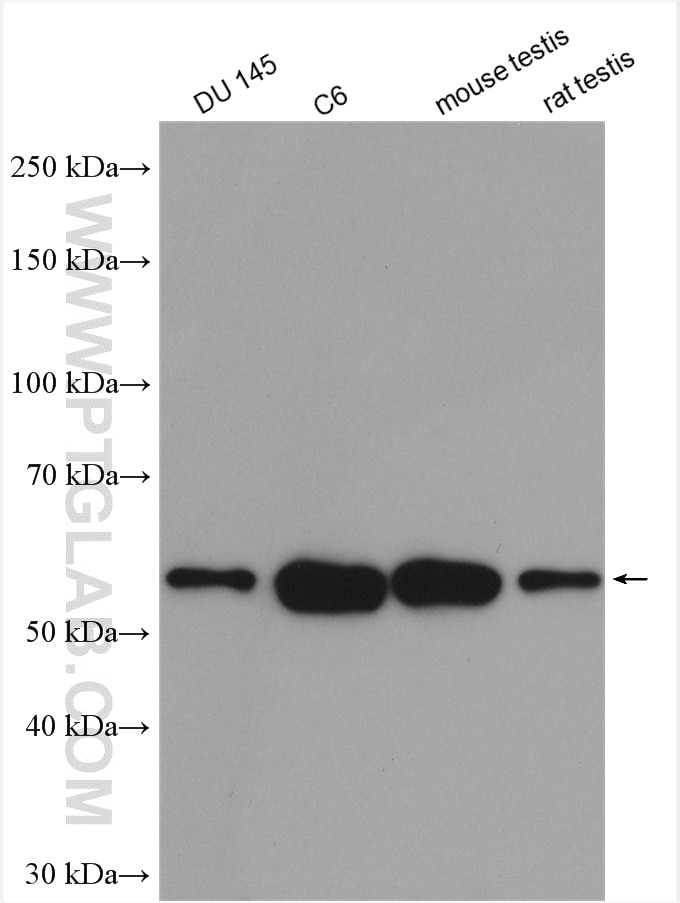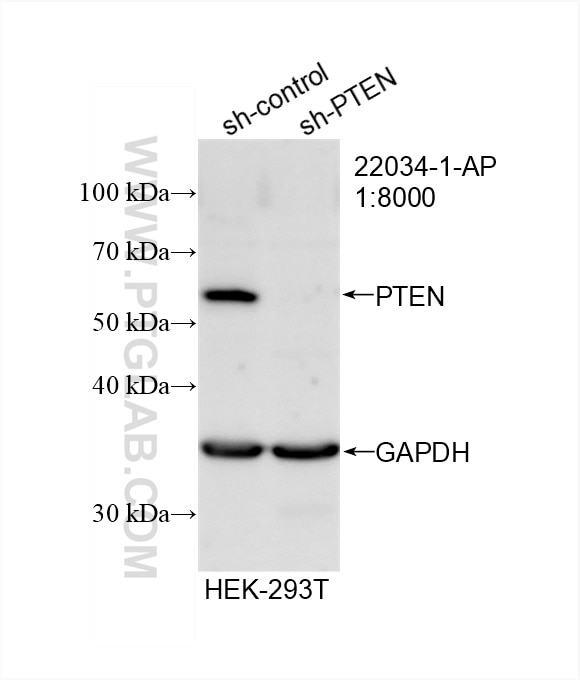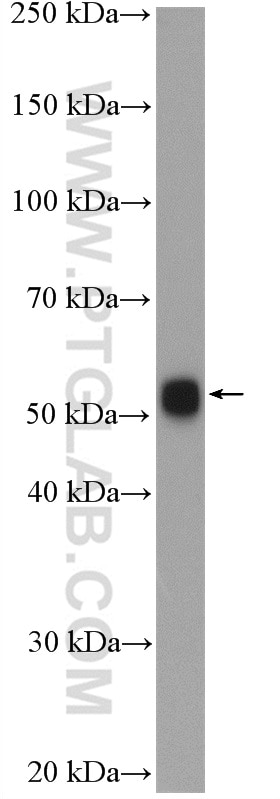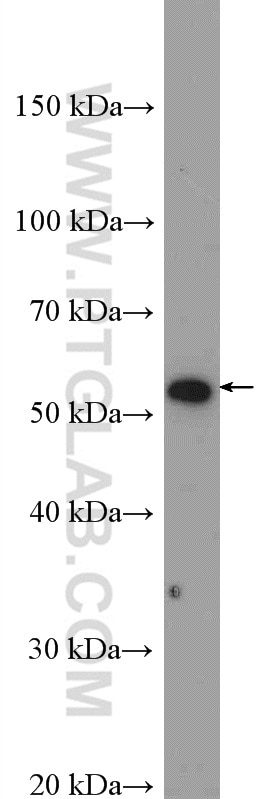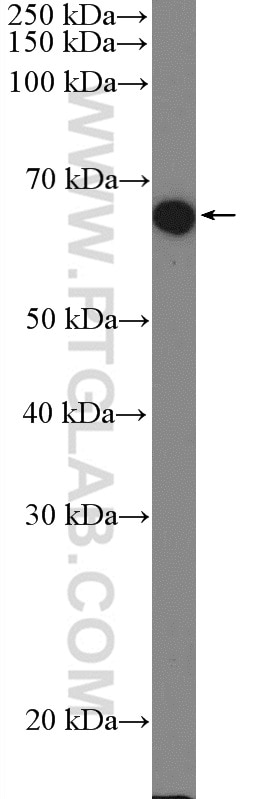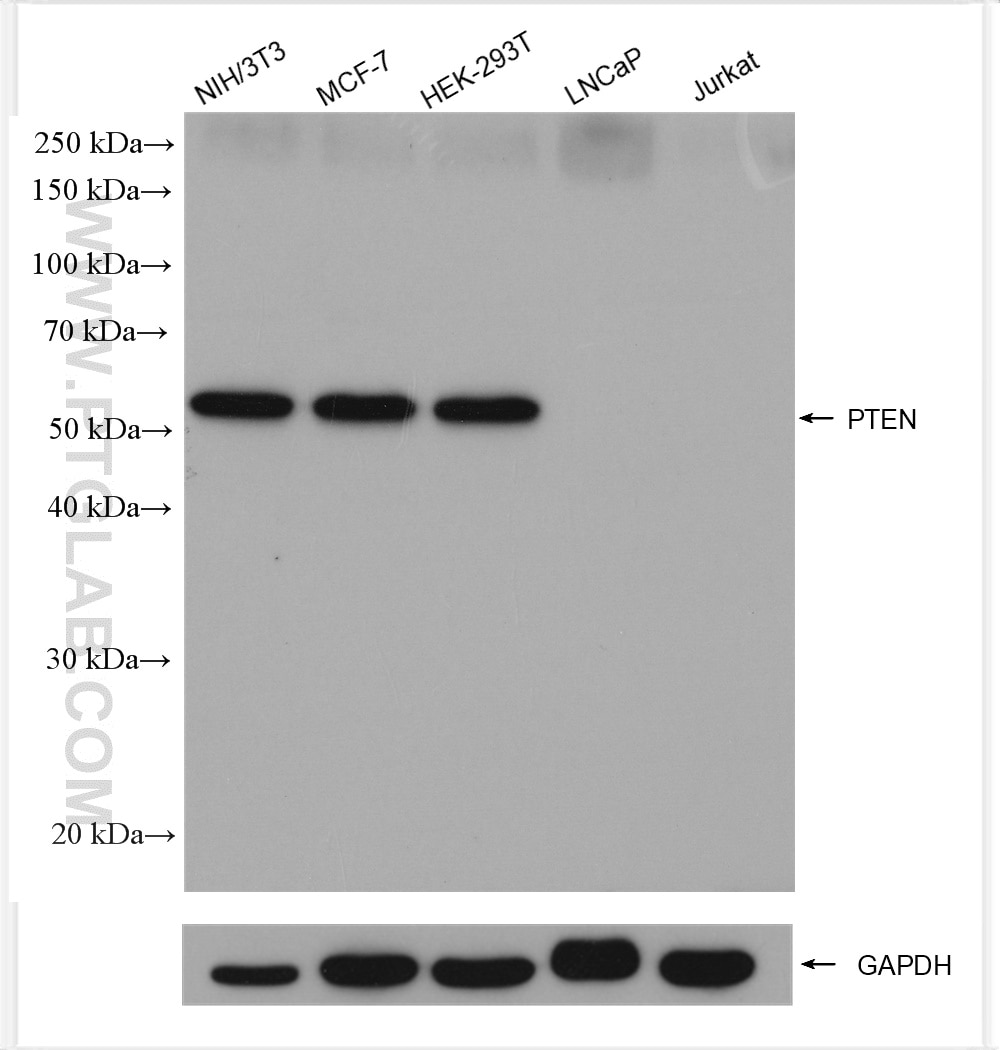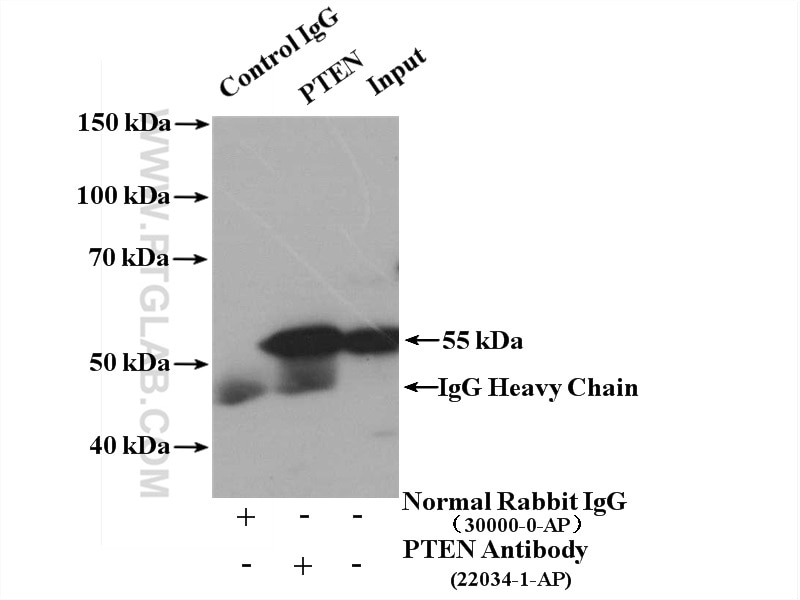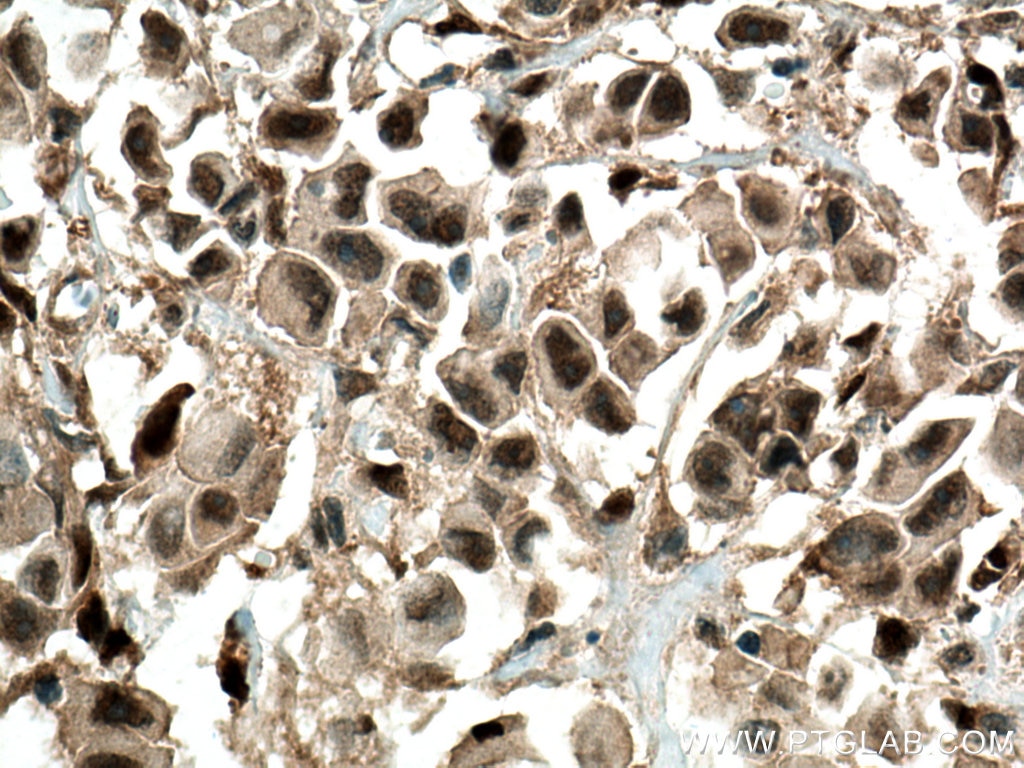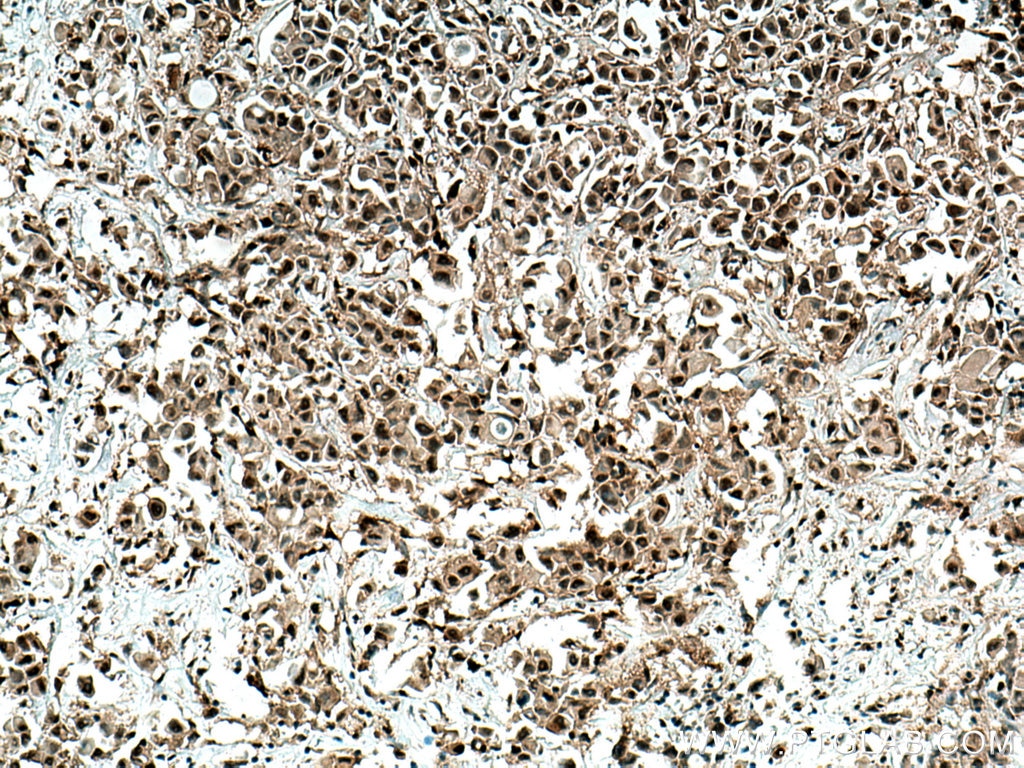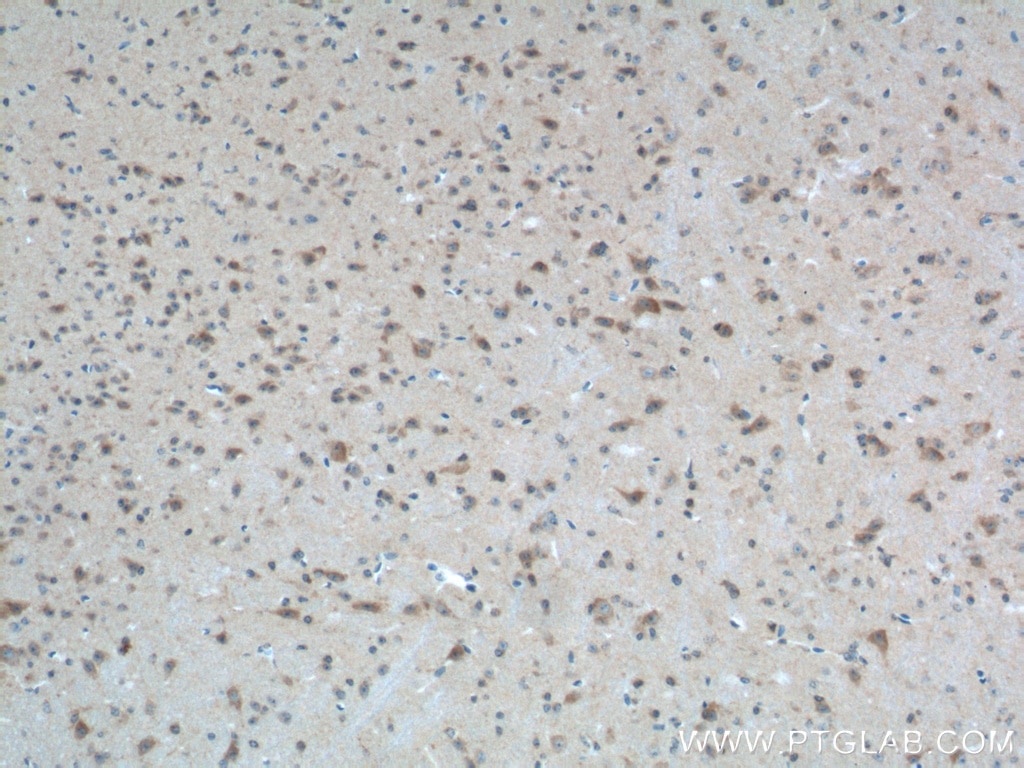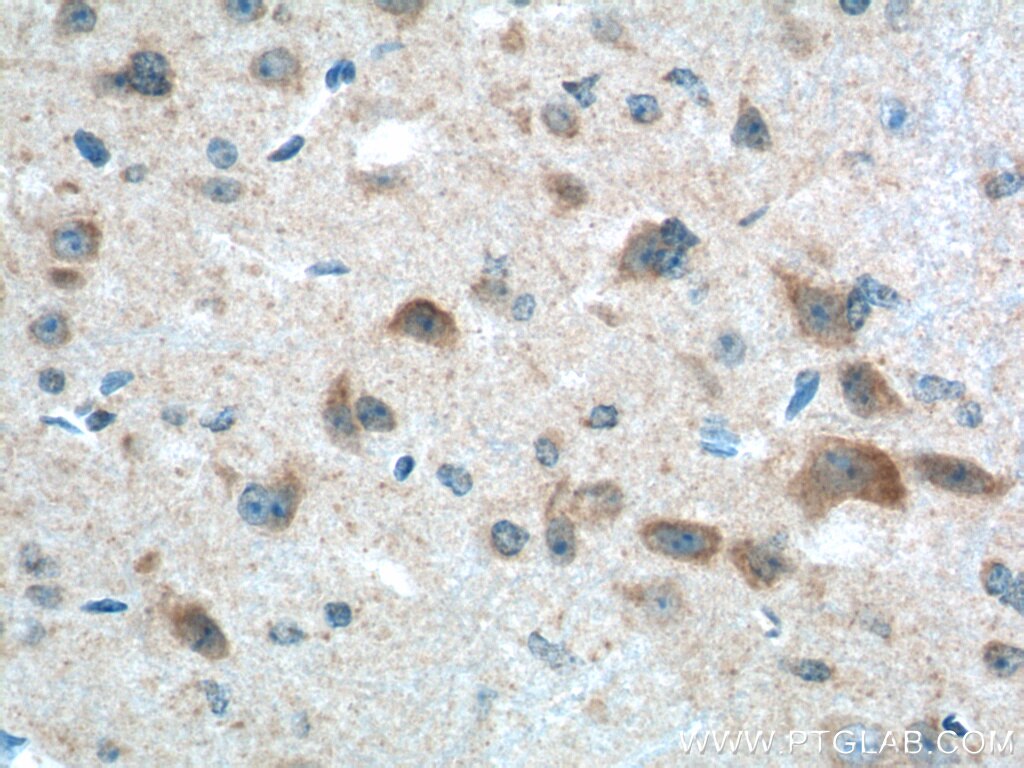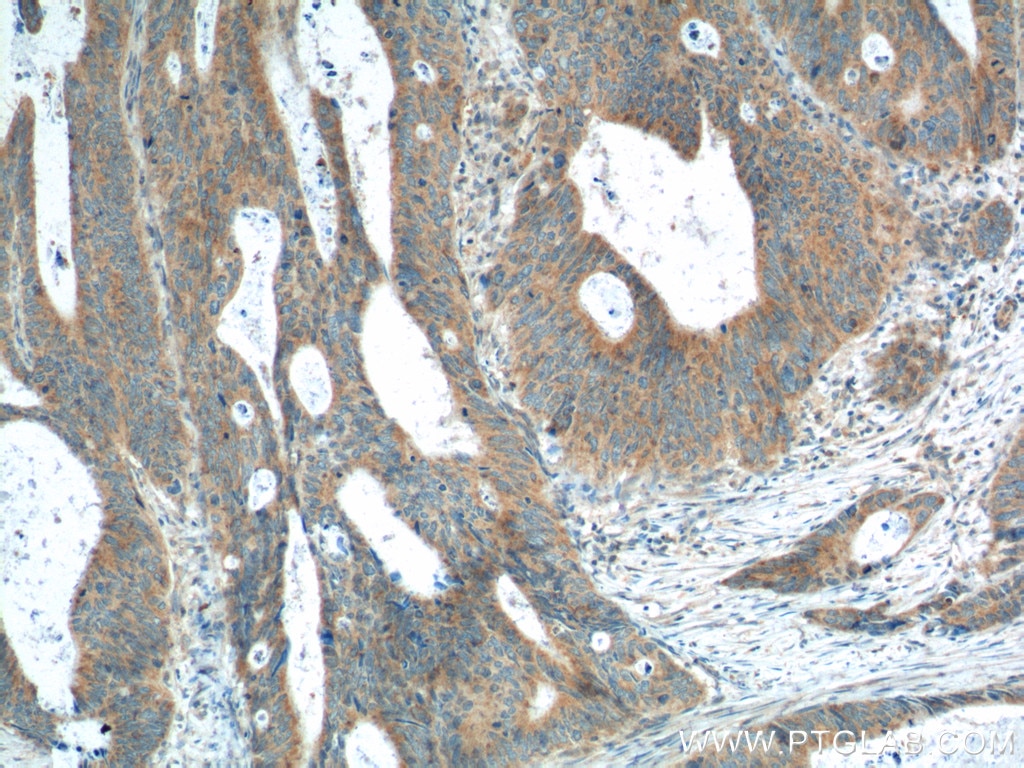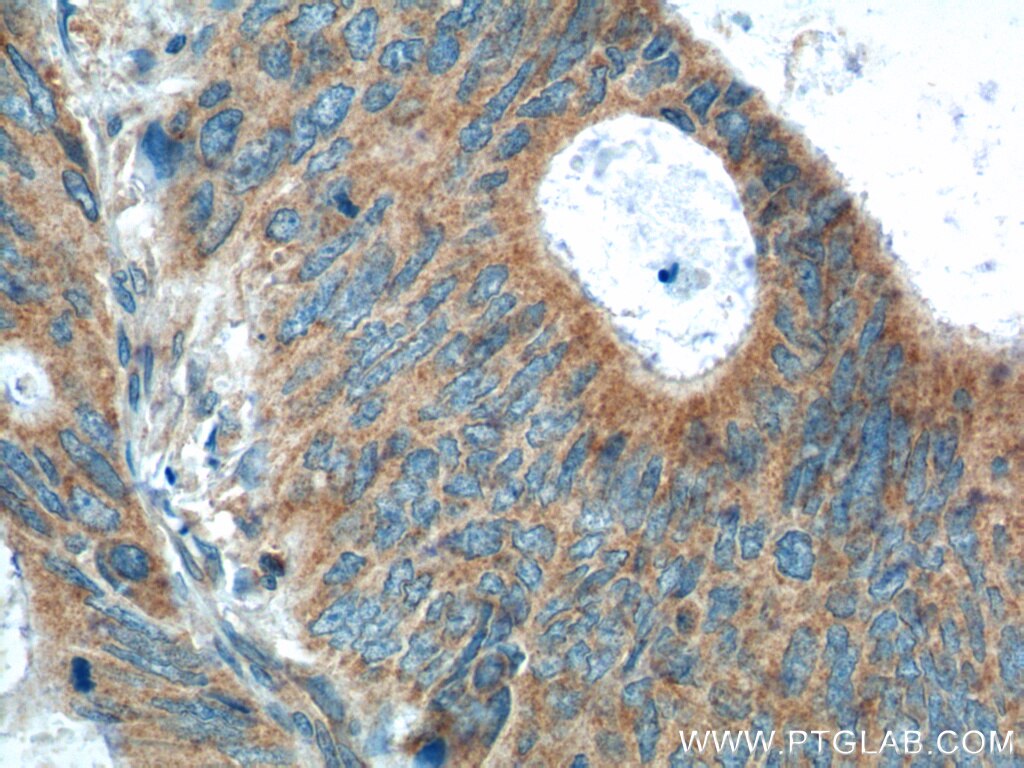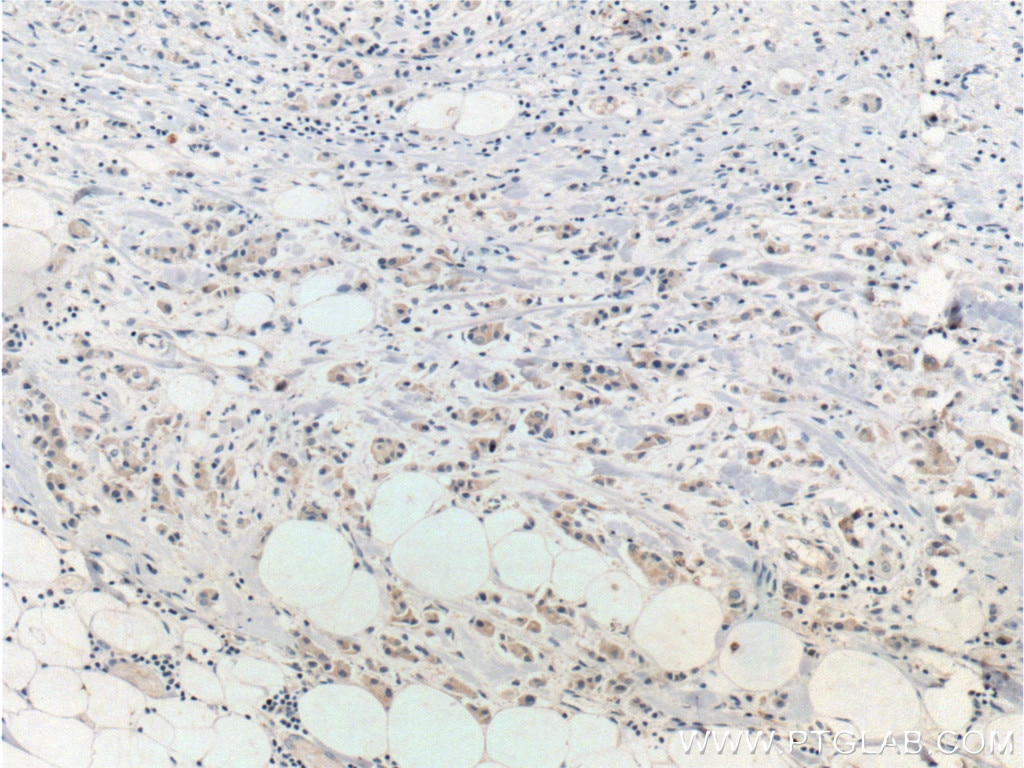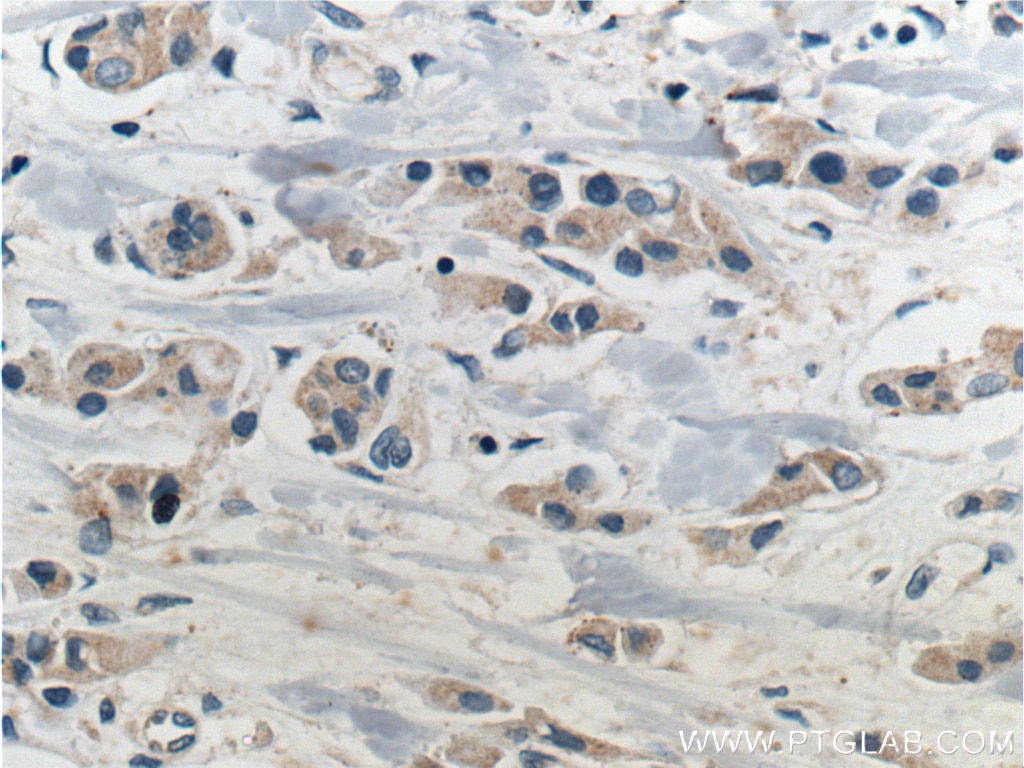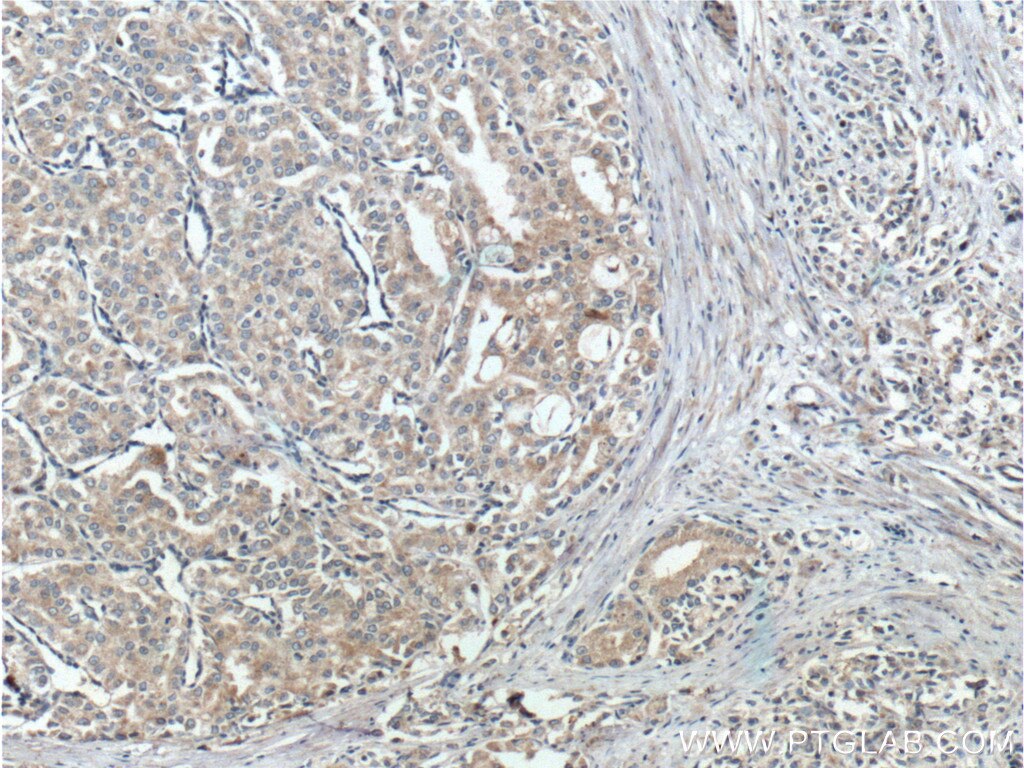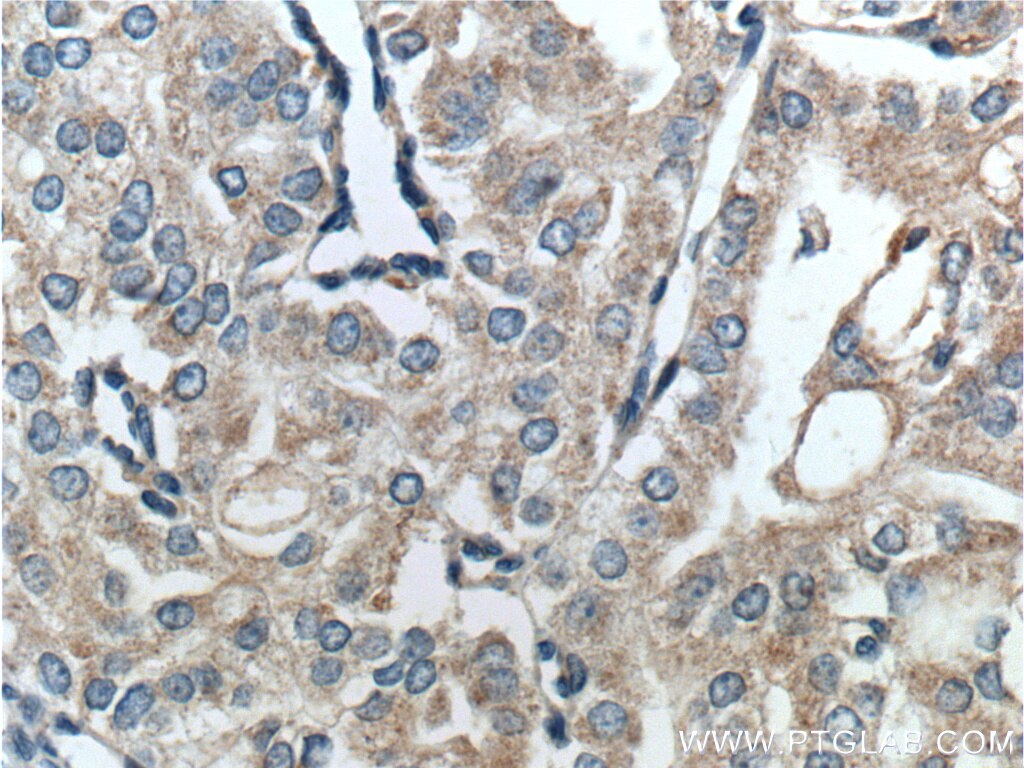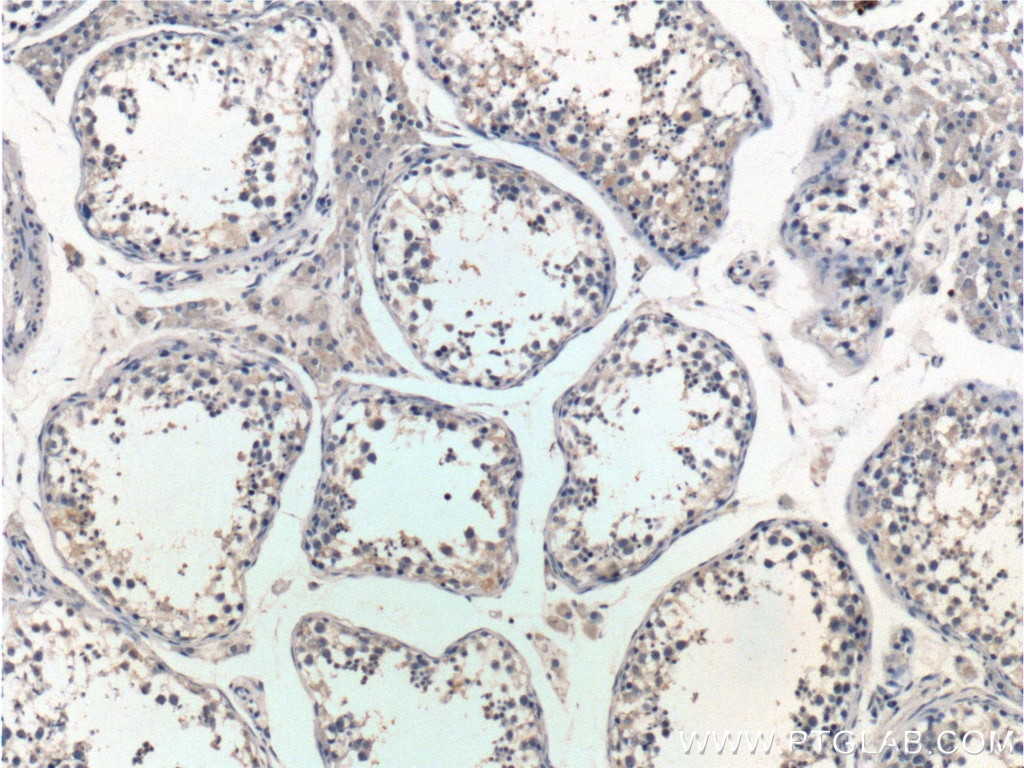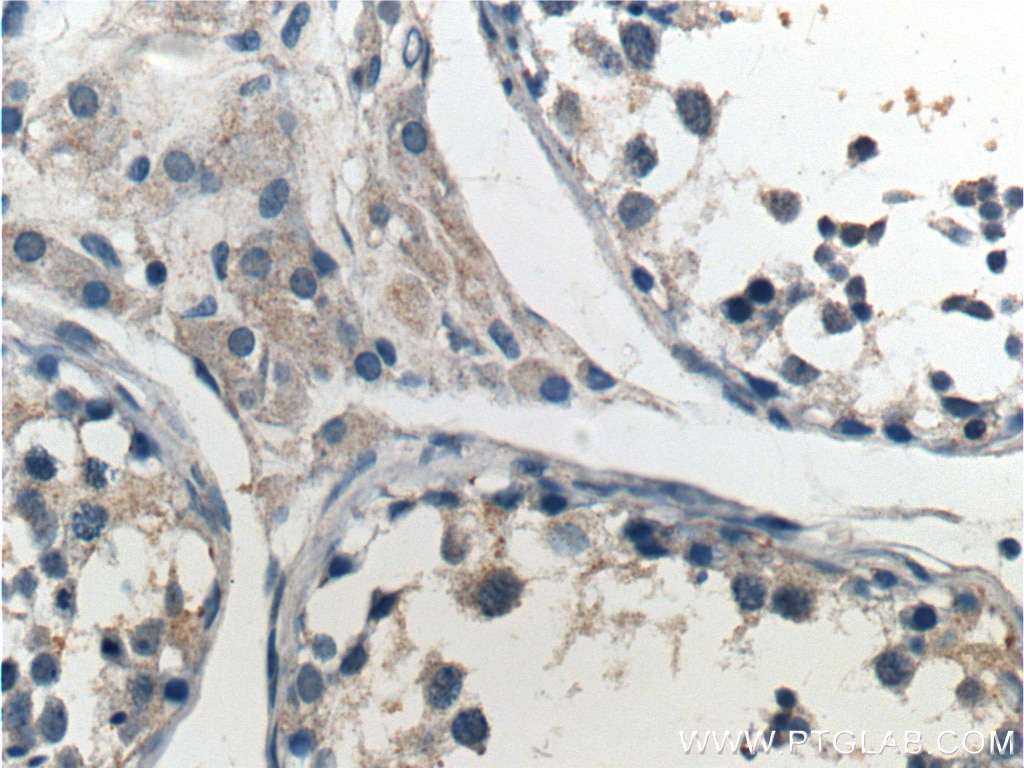- Phare
- Validé par KD/KO
Anticorps Polyclonal de lapin anti-PTEN
PTEN Polyclonal Antibody for WB, IHC, IP, ELISA
Hôte / Isotype
Lapin / IgG
Réactivité testée
Humain, rat, souris et plus (2)
Applications
WB, IHC, IF, IP, CoIP, RIP, ELISA
Conjugaison
Non conjugué
N° de cat : 22034-1-AP
Synonymes
Galerie de données de validation
Applications testées
| Résultats positifs en WB | cellules DU 145, cellules C6, cellules HEK-293T, cellules HeLa, cellules Jurkat, cellules LNCaP, cellules MCF-7, cellules NIH/3T3, tissu testiculaire de rat, tissu testiculaire de souris |
| Résultats positifs en IP | cellules DU 145, |
| Résultats positifs en IHC | tissu de cancer du sein humain, tissu cérébral de souris, tissu de cancer de la prostate humain, tissu de cancer du côlon humain, tissu testiculaire humain il est suggéré de démasquer l'antigène avec un tampon de TE buffer pH 9.0; (*) À défaut, 'le démasquage de l'antigène peut être 'effectué avec un tampon citrate pH 6,0. |
Dilution recommandée
| Application | Dilution |
|---|---|
| Western Blot (WB) | WB : 1:2000-1:10000 |
| Immunoprécipitation (IP) | IP : 0.5-4.0 ug for 1.0-3.0 mg of total protein lysate |
| Immunohistochimie (IHC) | IHC : 1:500-1:2000 |
| It is recommended that this reagent should be titrated in each testing system to obtain optimal results. | |
| Sample-dependent, check data in validation data gallery | |
Informations sur le produit
22034-1-AP cible PTEN dans les applications de WB, IHC, IF, IP, CoIP, RIP, ELISA et montre une réactivité avec des échantillons Humain, rat, souris
| Réactivité | Humain, rat, souris |
| Réactivité citée | rat, bovin, Humain, porc, souris |
| Hôte / Isotype | Lapin / IgG |
| Clonalité | Polyclonal |
| Type | Anticorps |
| Immunogène | PTEN Protéine recombinante Ag17274 |
| Nom complet | phosphatase and tensin homolog |
| Masse moléculaire calculée | 47 kDa |
| Poids moléculaire observé | 55 kDa, 68 kDa |
| Numéro d’acquisition GenBank | BC005821 |
| Symbole du gène | PTEN |
| Identification du gène (NCBI) | 5728 |
| Conjugaison | Non conjugué |
| Forme | Liquide |
| Méthode de purification | Purification par affinité contre l'antigène |
| Tampon de stockage | PBS with 0.02% sodium azide and 50% glycerol |
| Conditions de stockage | Stocker à -20°C. Stable pendant un an après l'expédition. L'aliquotage n'est pas nécessaire pour le stockage à -20oC Les 20ul contiennent 0,1% de BSA. |
Informations générales
Phosphatase and tensin homolog (PTEN) is an enzyme key in cell cycle regulation and in tumor suppression.
What is the molecular weight of PTEN?
PTEN is composed of 403 amino acid residues with an N-terminal domain with phosphatase activity and a
C-terminal C2 domain that binds phospholipid membranes (PMID:14749127). This antibody can recognize
two isoforms with MWs of 55kDa and 68 kDa.
What is the function of PTEN?
Widely expressed throughout the body, PTEN is found in the cytoplasm and inhibits cell cycle progression
through phosphatase activity. It regulates intracellular levels of phosphatidylinositol-3,4,5-trisphosphate (PIP3)
by catalyzing the dephosphorylation of the inositol ring. This function counteracts the growth-stimulating
activity of the PI3K/AKT signaling pathway and thereby suppresses proliferation. Therefore, in homeostasis,
PTEN promotes chromosome stability and DNA repair (PMID: 24387334).Expression and function can be
regulated by posttranslational modifications, including acetylation for decreased catalytic activity and
ubiquitination for protein degradation, nuclear localization, and inhibition of phosphatase activity
(PMID: 24656806).
What is the role of PTEN in cancer?
PTEN was first identified as a tumor suppressor when mutations or deletions were identified by two separate
groups in a number of different cancer types including gliomas, breast, prostate, and kidney cancer
(PMID: 9090379; PMID: 9072974). Non-inherited, or somatic, mutations in PTEN that lead to a loss of function
in the protein have been shown to drive malignancy in tumors. PTEN hamartoma tumor syndrome (PHTS) is a
group of inherited disorders that occur as a result of autosomal dominant mutations in the PTEN gene. These
disorders include Cowden syndrome, Bannayan-Riley-Ruvalcaba syndrome, and Proteus syndrome. Because of
the constitutive expression of PTEN, the symptoms are varied but often include neurodevelopmental issues and
an increased risk of developing tumors, both benign and malignant (PMID: 26564076).
Protocole
| Product Specific Protocols | |
|---|---|
| WB protocol for PTEN antibody 22034-1-AP | Download protocol |
| IHC protocol for PTEN antibody 22034-1-AP | Download protocol |
| IP protocol for PTEN antibody 22034-1-AP | Download protocol |
| Standard Protocols | |
|---|---|
| Click here to view our Standard Protocols |
Publications
| Species | Application | Title |
|---|---|---|
Nat Commun Myo9b mutations are associated with altered dendritic cell functions and increased susceptibility to autoimmune diabetes onset | ||
Biomater Res High yield engineered nanovesicles from ADSC with enriched miR-21-5p promote angiogenesis in adipose tissue regeneration | ||
Drug Des Devel Ther Network Pharmacology and Experimental Validation to Explore That Celastrol Targeting PTEN is the Potential Mechanism of Tripterygium wilfordii (Lév.) Hutch Against IgA Nephropathy | ||
J Adv Res Salidroside sensitizes Triple-negative breast cancer to ferroptosis by SCD1-mediated lipogenesis and NCOA4-mediated ferritinophagy | ||
J Pineal Res Melatonin increases susceptibility to atrial fibrillation in obesity via Akt signaling impairment in response to lipid overload | ||
Cell Death Dis FBXO32-mediated degradation of PTEN promotes lung adenocarcinoma progression |
